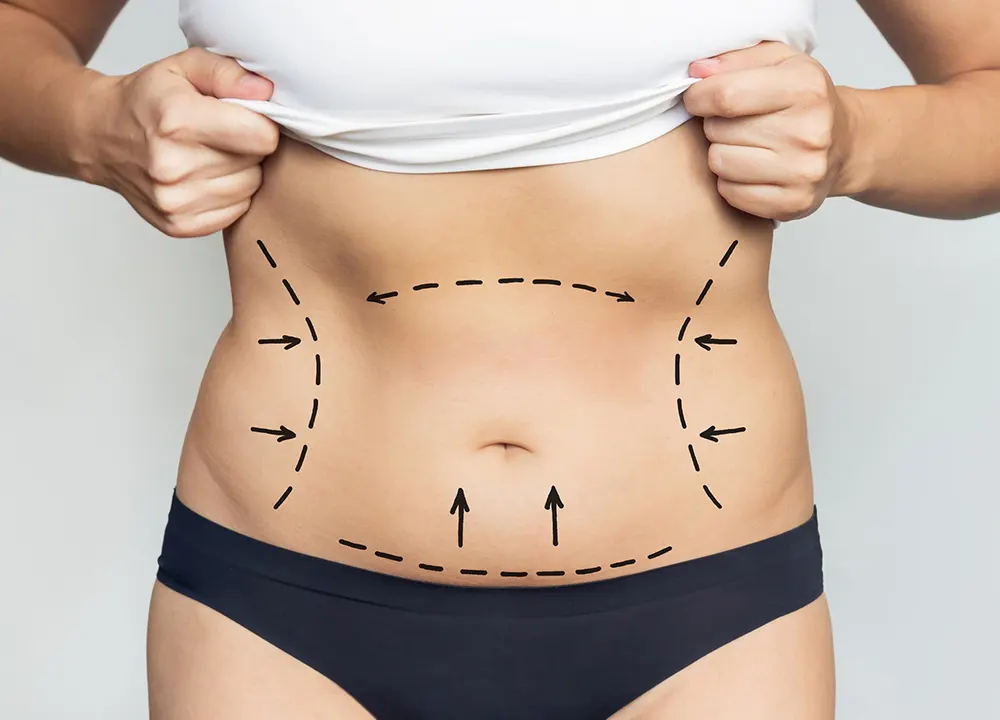- Call Today +90 537 762 59 24
- Open Hour Open 24 Hours

Liposuction, recognized as fat removal surgery, stands as a transformative procedure designed to refine body contours by addressing stubborn fat deposits impervious to conventional exercise and dietary interventions. This sought-after cosmetic surgery is routinely applied to areas such as the waist, hips, abdomen, inner thighs, and neck, meeting the rising demand fueled by an increasingly sedentary lifestyle and a surge in obesity rates.
Liposuction, in essence, involves the surgical extraction of localized fat deposits beneath the skin using thin tubes known as cannulas, coupled with vacuum suction. The technique has evolved over time, presenting a spectrum of methods tailored to individual patient characteristics and the discernment of skilled surgeons.
At its core, liposuction is a meticulous process of breaking down and eliminating fat tissues that defy conventional weight loss methods, leading to localized deformities in the body.
Ideal candidates for liposuction are individuals who have achieved overall weight loss but grapple with persistent protrusions in specific areas, such as the abdomen, hips, buttocks, thighs, knees, arms, chin, cheeks, and neck.
Beyond being a mere weight loss technique, liposuction serves as a targeted contouring method, addressing uneven fat distribution attributable to factors like pregnancy, genetics, or structural reasons. This procedure empowers individuals to reshape their bodies, fostering renewed self-confidence.
Executed under either general or local anesthesia, liposuction involves injecting a specialized solution into designated areas to ease fat removal and minimize bleeding. Small, strategically placed incisions are made, and excess fat is meticulously vacuumed out using thin cannulas. Notably, multiple areas can be addressed within a single session.
You can find frequently asked questions and their answers about the liposuction procedure below.
While acknowledging the inherent risks associated with any surgical intervention, liposuction's safety is optimized when performed under optimal conditions by a qualified plastic surgeon in a sterile operating room. Careful consideration of the patient's health and adherence to scientific rules minimize potential complications.
In anticipation of liposuction, patients are advised to discontinue blood thinners and certain teas a week before surgery. The importance of post-operative care, including the utilization of a special corset, cannot be overstated.
The duration of the procedure is contingent upon the size of the treated area(s), with an average ranging from 1 to 1.5 hours. Post-liposuction, recovery times differ based on the type of anesthesia administered.
Navigating post-surgery, individuals are encouraged to wear a corset to manage inevitable swelling and optimize the healing process. Initial feelings of weakness and fatigue can be alleviated by attending to fluid intake, promoting a smoother recovery.
While acknowledging the effectiveness of liposuction in reshaping body contours, it is crucial to underscore that it should not be perceived as a substitute for adopting a healthy lifestyle. Patients are strongly encouraged to maintain balanced dietary habits and an active exercise routine for enduring success.
Liposuction primarily functions as a method to contour the body, not as a weight loss panacea. It is most effective in addressing persistent fat deposits that resist conventional weight loss methods.
Mild discomfort post-liposuction is manageable, akin to sensations experienced after strenuous exercise. Pain relievers are recommended to alleviate temporary post-surgical discomfort.
Conducted under the expertise of seasoned professionals, liposuction is generally safe, with risks minimized. Potential aesthetic complications are infrequent and can be mitigated through careful surgical execution.
Laser liposuction, harnessing high-intensity laser light, can contribute to skin tightening, enhancing overall aesthetic outcomes.
Pending approval from the surgeon, individuals can typically resume work one week after liposuction, underlining the procedure's relatively swift recovery.
Final results, marking the resolution of swelling and the attainment of the body's definitive form, typically manifest six weeks post-surgery. The transformative outcomes can be further enhanced through the incorporation of a balanced diet and regular exercise.
Individuals contemplating liposuction, particularly those with excess weight, are advised to focus on achieving overall weight loss through a consistent diet and exercise routine before considering targeted fat removal. Liposuction is a comprehensive surgical intervention, and individuals should prioritize adopting a healthier lifestyle.
Four primary liposuction techniques are employed—wet, laser-assisted, ultrasonic-assisted, and power-assisted liposuction. Each method offers unique advantages, with the selection guided by individual patient characteristics and the surgeon's proficiency.
Choosing the most suitable technique hinges on a thorough consideration of individual needs and the surgeon's expertise.
© 2026 Copyright by Private Koru Hospital. All rights reserved.
